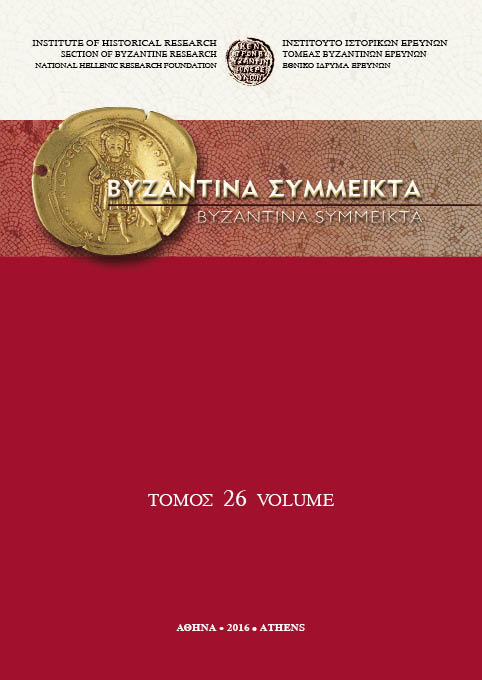Hierarchies and fractals: ecclesiastical revenues as indicator for the distribution of relative demographic and economic potential within the cities and regions of the Late Byzantine Empire in the early 14th century

Abstract
Article Details
- How to Cite
-
PREISER-KAPELLER, J., & MITSIOU, E. (2011). Hierarchies and fractals: ecclesiastical revenues as indicator for the distribution of relative demographic and economic potential within the cities and regions of the Late Byzantine Empire in the early 14th century. Byzantina Symmeikta, 20, 245–308. https://doi.org/10.12681/byzsym.993
- Issue
- ΒΥΖΑΝΤΙΝΑ SΥΜΜΕΙΚΤΑ 20
- Section
- Articles

This work is licensed under a Creative Commons Attribution-NonCommercial-ShareAlike 4.0 International License.
Copyright: The copyright for articles in this journal is retained by the author(s), with first publication rights granted to the journal. By virtue of their appearance in this open access journal, articles are free to use (with the exception of the non-granted right to make derivative works) with proper attribution for non-commercial uses (licence Creative Commons 4.0). NHRF retains the worldwide right to reproduce, display, distribute, and use articles published in BYZANTINA SYMMEIKTA in all formats and media, either separately or as part of collective works for the full term of copyright. This includes but is not limited to the right to publish articles in an issue of the Journal, copy and distribute individual reprints of the articles, authorize reproduction of articles in their entirety in another NHRF publication, and authorize reproduction and distribution of articles or abstracts thereof by means of computerized retrieval systems.



